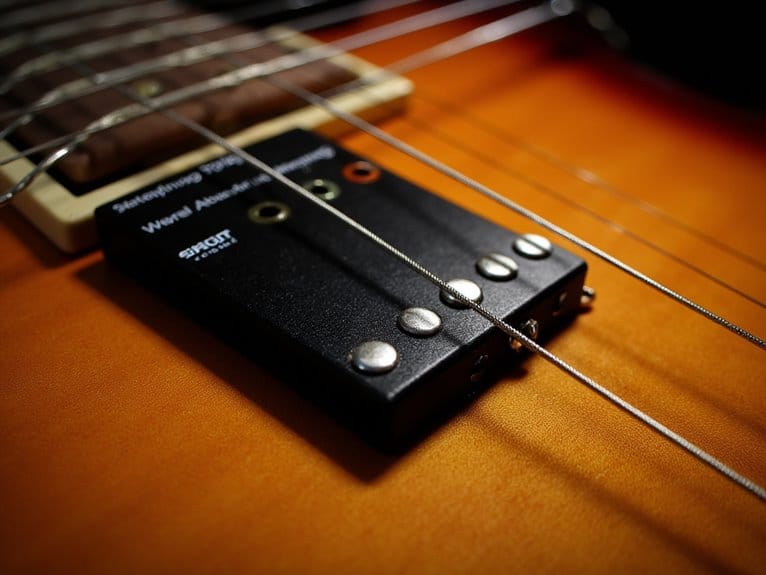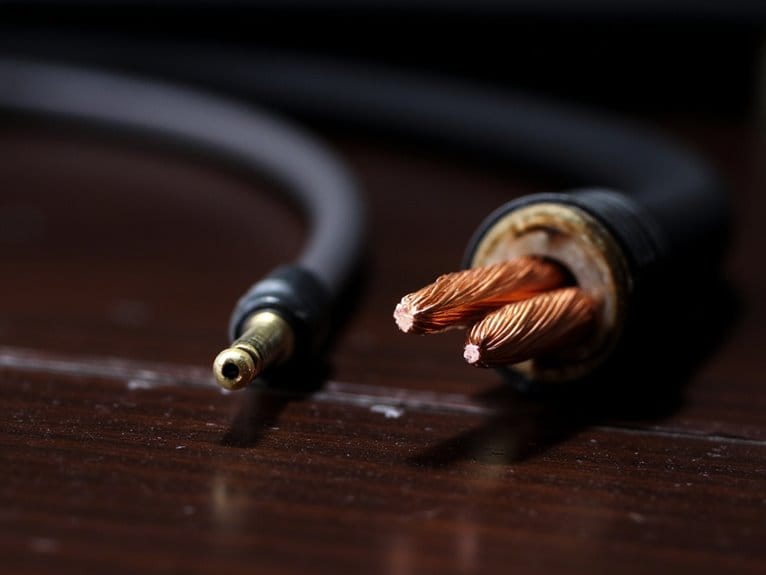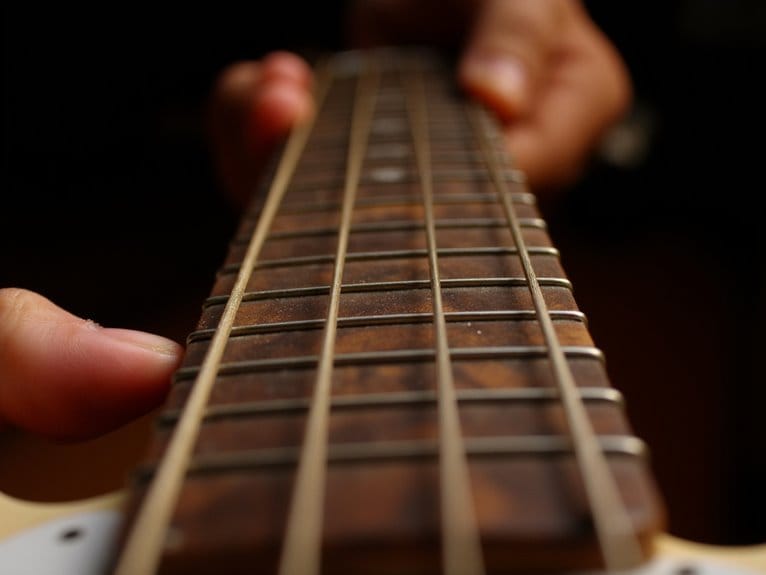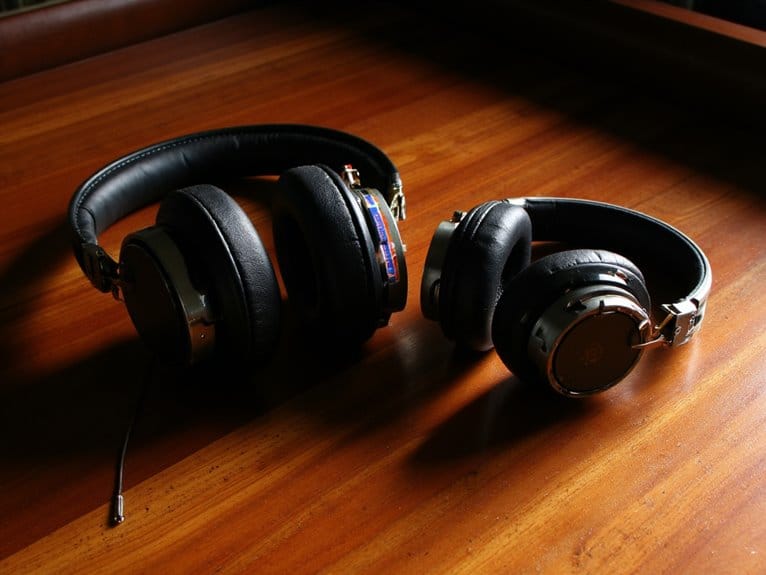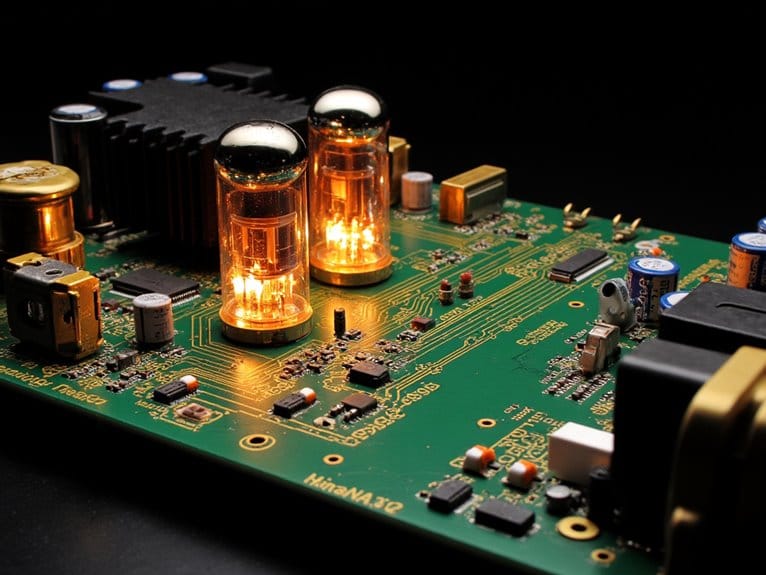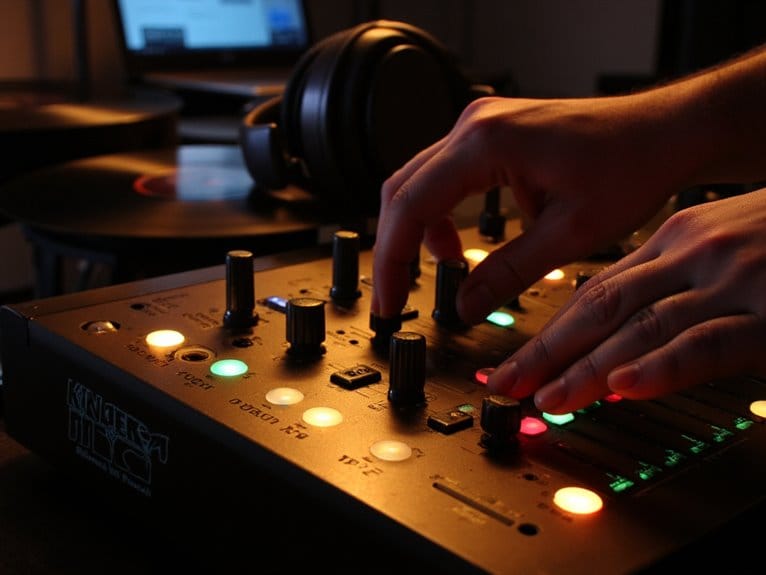Guitar MIDI: A Comprehensive Guide
MIDI guitar technology converts your string vibrations into digital data, allowing you to control synthesizers, orchestral samples, and electronic instruments beyond traditional pickups. You’ll encounter latency challenges, especially with lower notes, but hexaphonic pickups capture individual strings for authentic bends and slides. Systems range from Roland’s GR-55 hardware to software solutions like Jam Origin, with latency spanning 2-50ms depending on your approach. Successful integration requires understanding signal flow, MIDI routing, and performance techniques that embrace intentional imperfection over mechanical precision-continuing ahead reveals the complete setup process.
We are supported by our audience. When you purchase through links on our site, we may earn an affiliate commission, at no extra cost for you. Learn more.
Notable Insights
- MIDI guitar technology converts string vibrations into digital data, enabling control of synthesizers and virtual instruments through pitch-tracking algorithms.
- Hexaphonic pickups capture individual string signals, allowing advanced articulation techniques like bends, slides, and hammer-ons for authentic performances.
- Proper rig setup requires understanding signal flow, using 5-pin DIN connectors, and configuring MIDI channels for layered sounds.
- Hardware controllers offer 2-5ms latency for live performance, while software solutions provide 10-30ms latency suitable for studio recording.
- Successful MIDI guitar performance emphasizes intentional imperfection, dynamic velocity programming, and humanization techniques over precise mechanical timing.
Understanding MIDI Guitar Technology and Hardware
When I first encountered MIDI guitar technology years ago, I’ll admit the concept seemed almost magical – the idea that my guitar’s string vibrations could transform into digital data that controls synthesizers, drum machines, and software instruments.
The idea that guitar strings could become digital controllers for synthesizers felt like pure magic when I first discovered it.
The technology works through pitch-tracking algorithms that analyze each string’s frequency, though this creates inherent latency, especially noticeable on lower notes that require longer detection periods.
Modern systems address MIDI tracking challenges by using hexaphonic pickups that capture individual strings separately, enabling sophisticated string articulation methods like independent bends and slides.
You’ll find dedicated MIDI guitars with built-in electronics, retrofit systems for standard guitars, and lightweight controllers like Jamstik that combine tracking with onboard sound modeling, expanding your sonic palette beyond traditional guitar tones. Just as 61-key MIDI controllers offer versatile studio and live performance capabilities, MIDI guitar systems provide musicians with comprehensive digital control options for various musical applications.
Similar to how MIDI keyboard controllers utilize velocity-sensitive keys to capture playing dynamics, MIDI guitar systems translate string articulations into expressive digital control data that can manipulate software instruments and hardware synthesizers.
Building Your MIDI Guitar Rig and Integration Setup
Once you’ve grasped the fundamentals of MIDI guitar technology, building an effective rig becomes a matter of strategic planning and understanding signal flow.
Though I’ve learned through countless hours of troubleshooting that the devil’s definitely in the details.
MIDI connection basics start with understanding that standard 5-pin DIN connectors only use three pins for data transmission, while cable specifications matter notably for longer runs where balanced XLR microphone cables can substitute effectively.
Your routing strategies should consider these essential elements:
- Controller types – Dedicated MIDI foot controllers with momentary switches provide reliable toggle functions for recording and loop playback.
- Power considerations – 7-pin DIN connectors supply phantom power, reducing external power needs across multiple devices.
- Signal flow – Daisy-chaining devices requires connecting MIDI OUT to MIDI IN sequentially, utilizing MIDI THRU ports for forwarding signals.
MIDI Guitar Control and DAW Workflow
After spending years wrestling with MIDI guitar setups that seemed to work perfectly in isolation but fell apart the moment I integrated them into my DAW workflow,
I’ve discovered that successful MIDI guitar control hinges on understanding how your guitar signal flows through the digital audio workstation’s architecture.
MIDI guitar routing becomes straightforward when you treat the plugin as an audio effect on your guitar track rather than a standalone instrument, enabling simultaneous control of multiple virtual instruments through intelligent MIDI signal control pathways.
Configure your DAW’s virtual MIDI loopbacks to route the converted signals back into your sequencer, then assign different MIDI channels for layered sounds while maintaining proper latency compensation to keep everything synchronized.
Advanced MIDI Programming and Performance Techniques
Building on solid DAW integration, I’ve learned that programming realistic MIDI guitar performances requires a completely different mindset than traditional keyboard-based MIDI sequencing, where the goal shifts from perfect timing to intentional imperfection that captures the organic flow of actual guitar playing.
Advanced strumming patterns and ghost notes programming form the foundation, while MIDI articulations techniques like hammer-ons and slides add authenticity.
Dynamic velocity programming differentiates between soft fingerpicking and aggressive metal picking, creating natural tonal variations that separate amateur from professional-sounding tracks.
- Apply humanization tools application with 2-5ms timing variations and velocity randomness
- Layer performance authenticity through multiple takes with slightly different articulations
- Program rhythmic complexity enhancement using palm mutes and dead notes
Expressive guitar techniques require deliberate imperfection over mechanical precision.
Popular MIDI Guitar Systems and Equipment Options
The landscape of MIDI guitar systems has evolved dramatically over the past decade, and I’ve tested most major options to understand how each approach tackles the fundamental challenge of converting guitar performance into reliable MIDI data. Modern MIDI guitar models like the Roland GR-55 showcase impressive synth integration through VG technology, while Brian Moore guitars incorporate sophisticated pickup technology with built-in piezo systems. The EXPRESSIV Midi Pro delivers exceptional 2ms latency through fretboard scanning, though software solutions like Jam Origin’s MIDI Guitar offer accessible alternatives using standard pickups and audio analysis for pitch detection.
| System Type | Latency | Best For |
|---|---|---|
| Hardware Controllers | 2-5ms | Live Performance |
| Software Solutions | 10-30ms | Studio Recording |
| Hybrid Systems | 5-15ms | Versatile Use |
| Mobile Applications | 20-50ms | Casual Playing |
| Foot Controller Options | Variable | Live Integration |
On a final note
You’ve now got the foundation to transform your guitar playing into the digital domain, though I’ll admit the learning curve can feel steeper than expected at first. Whether you’re tracking MIDI for studio work, triggering samples live, or exploring hybrid analog-digital sounds, the key lies in patient calibration and consistent practice. Your guitar’s already expressive-MIDI just amplifies those possibilities exponentially.

